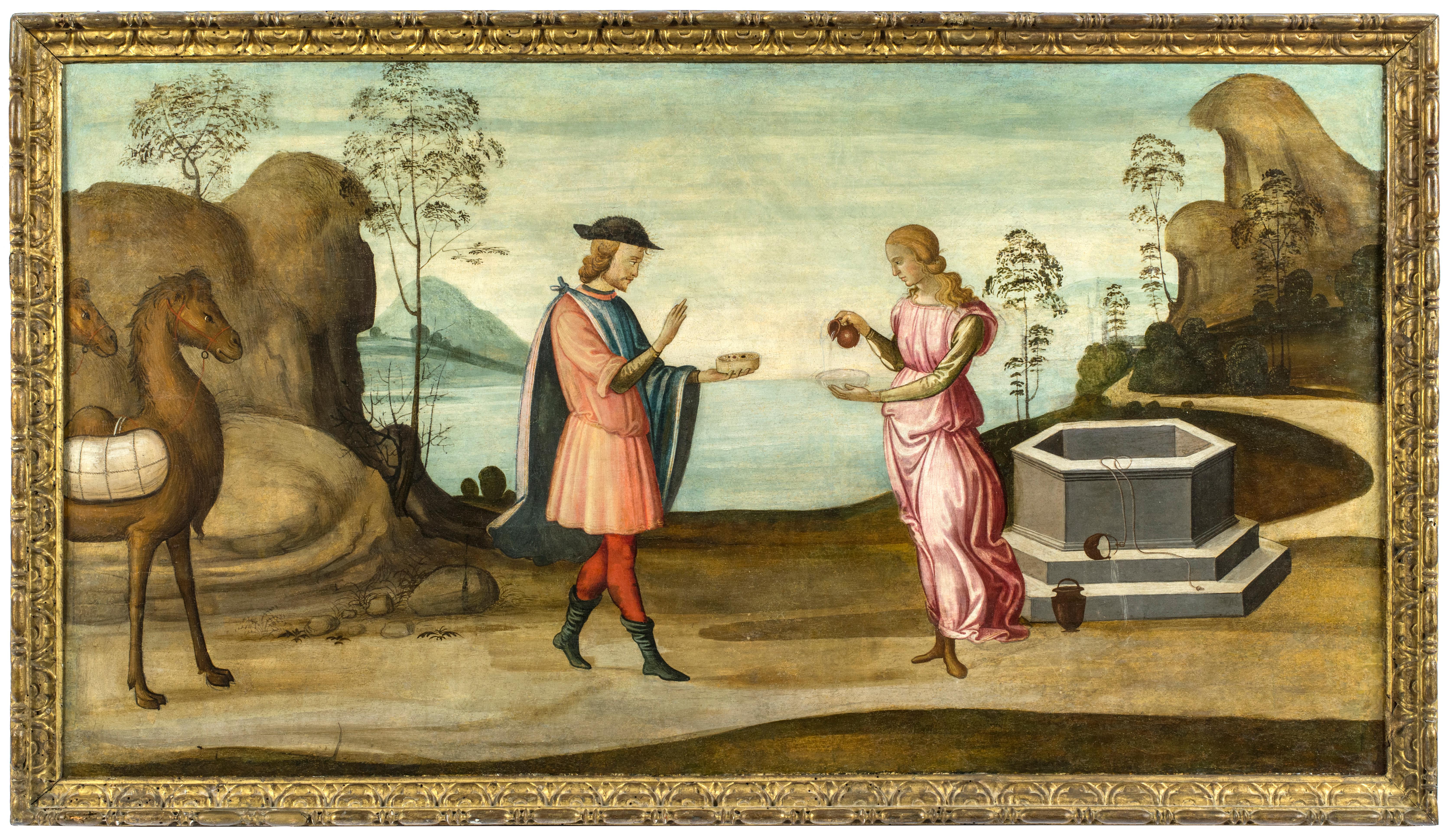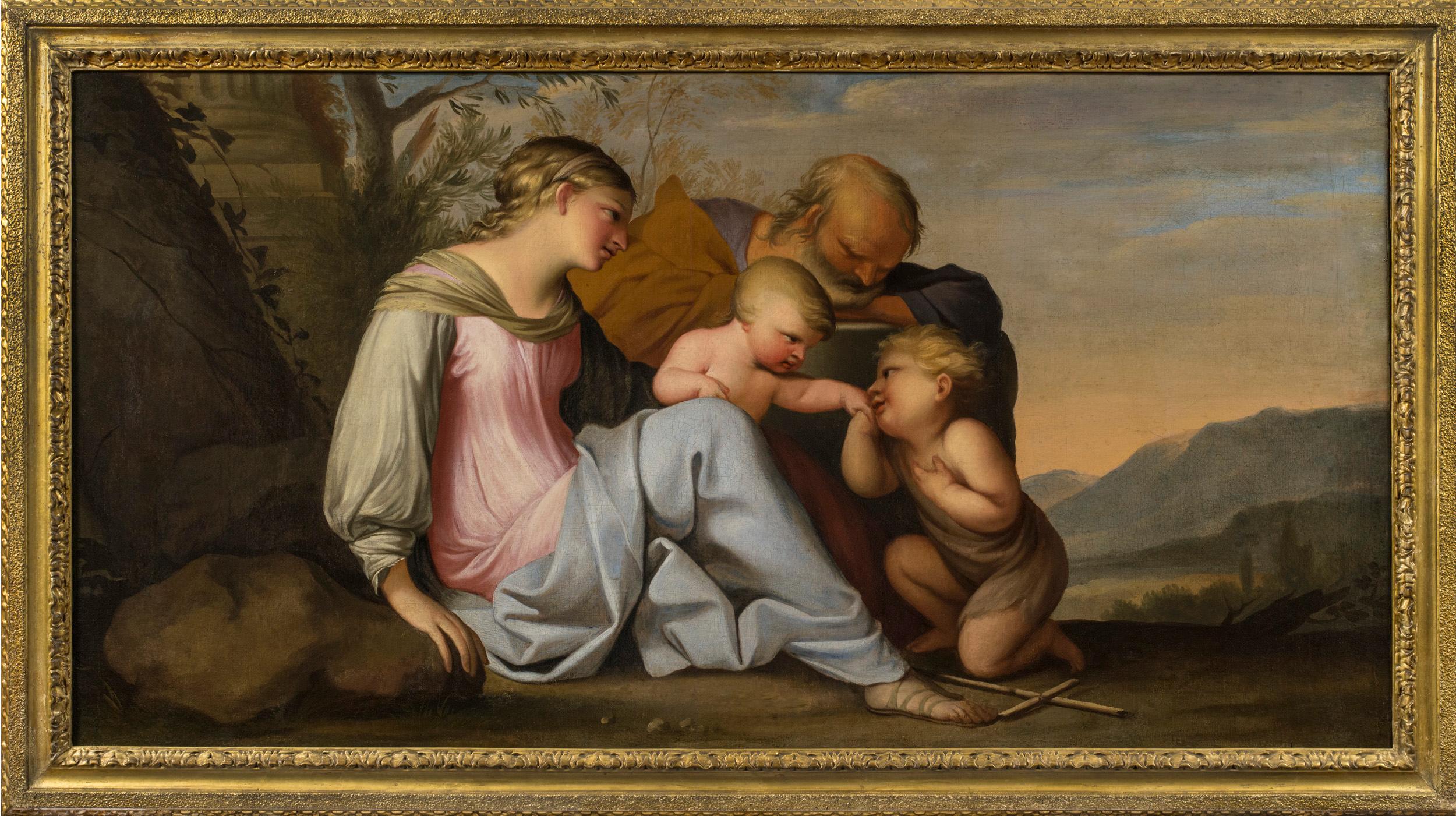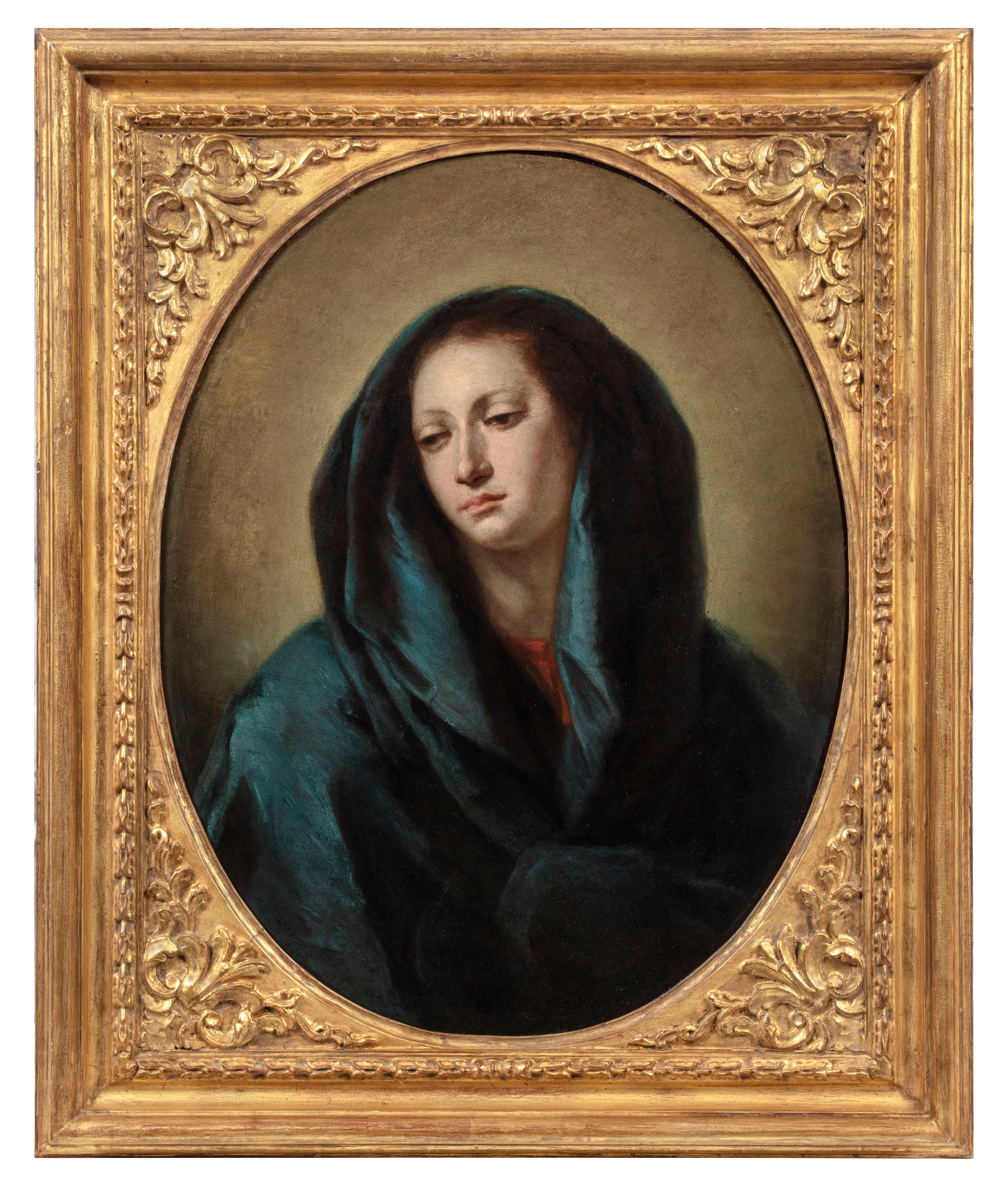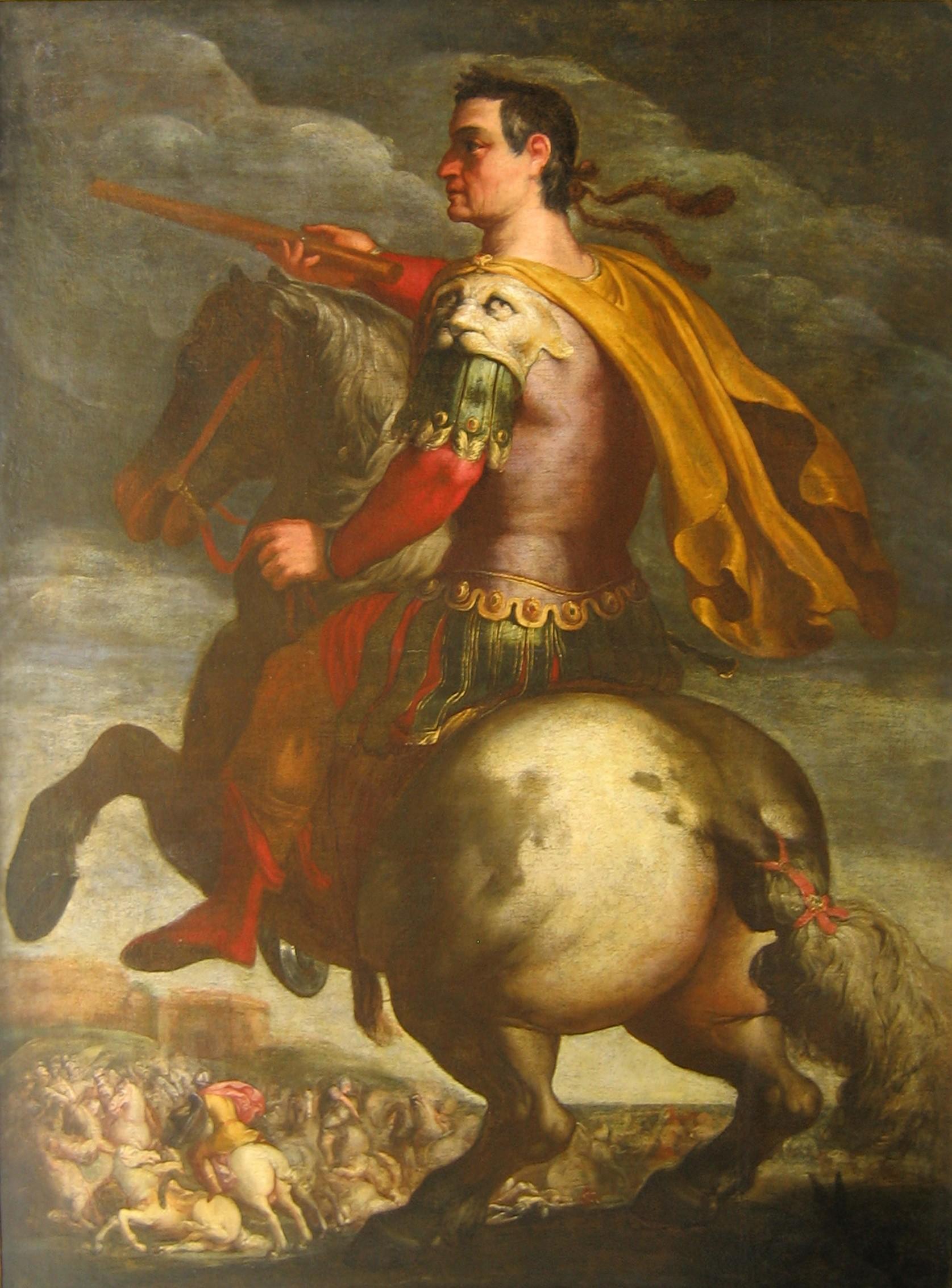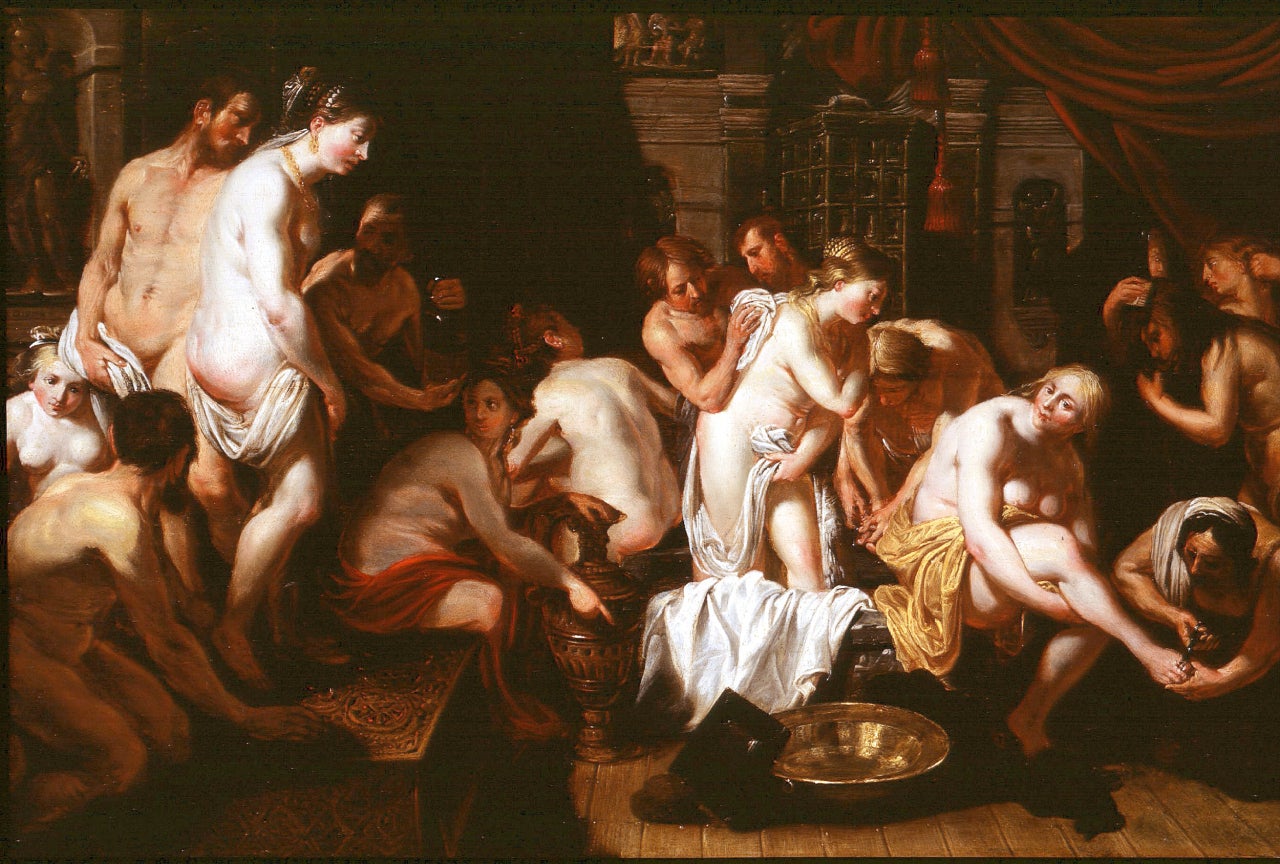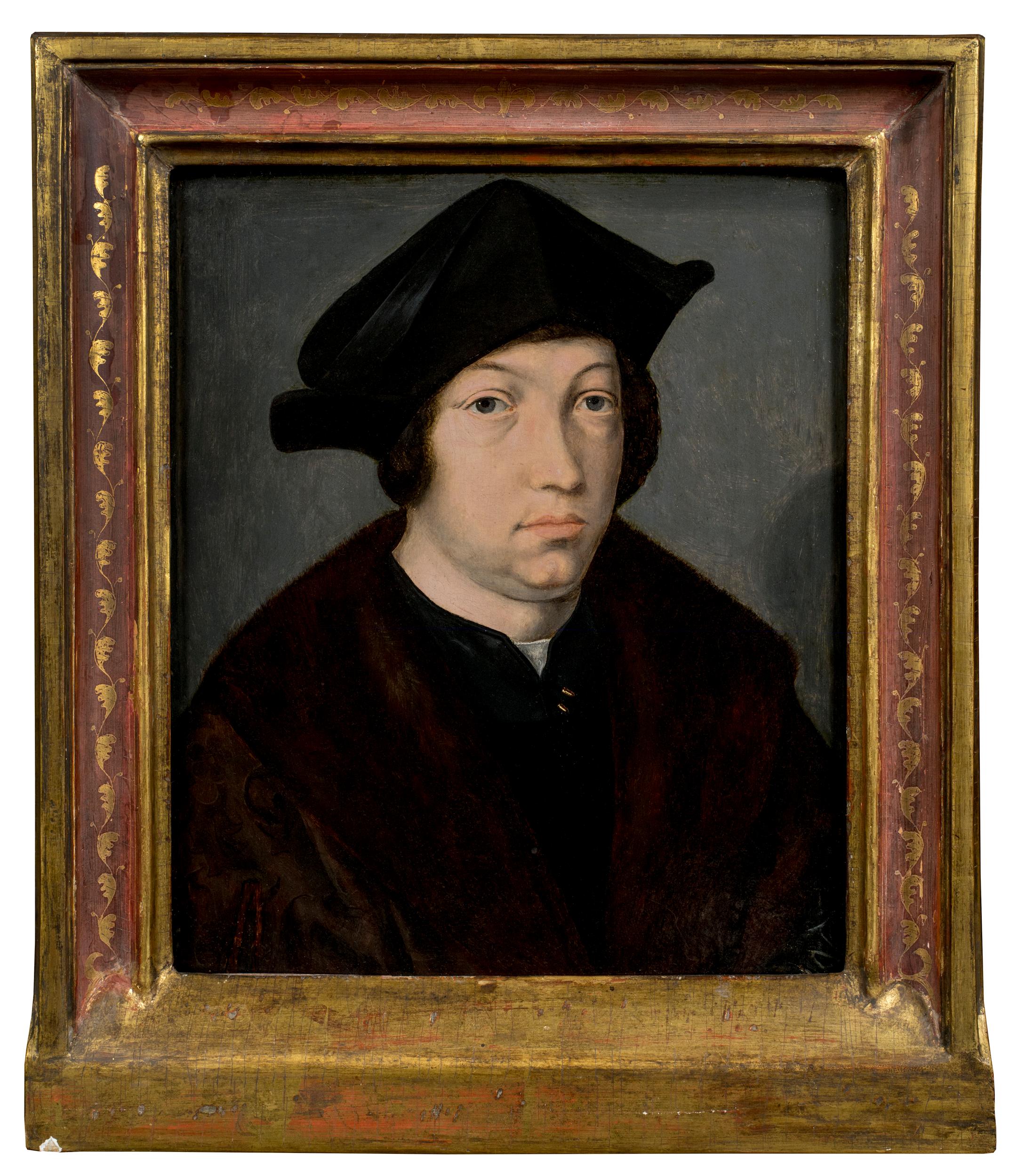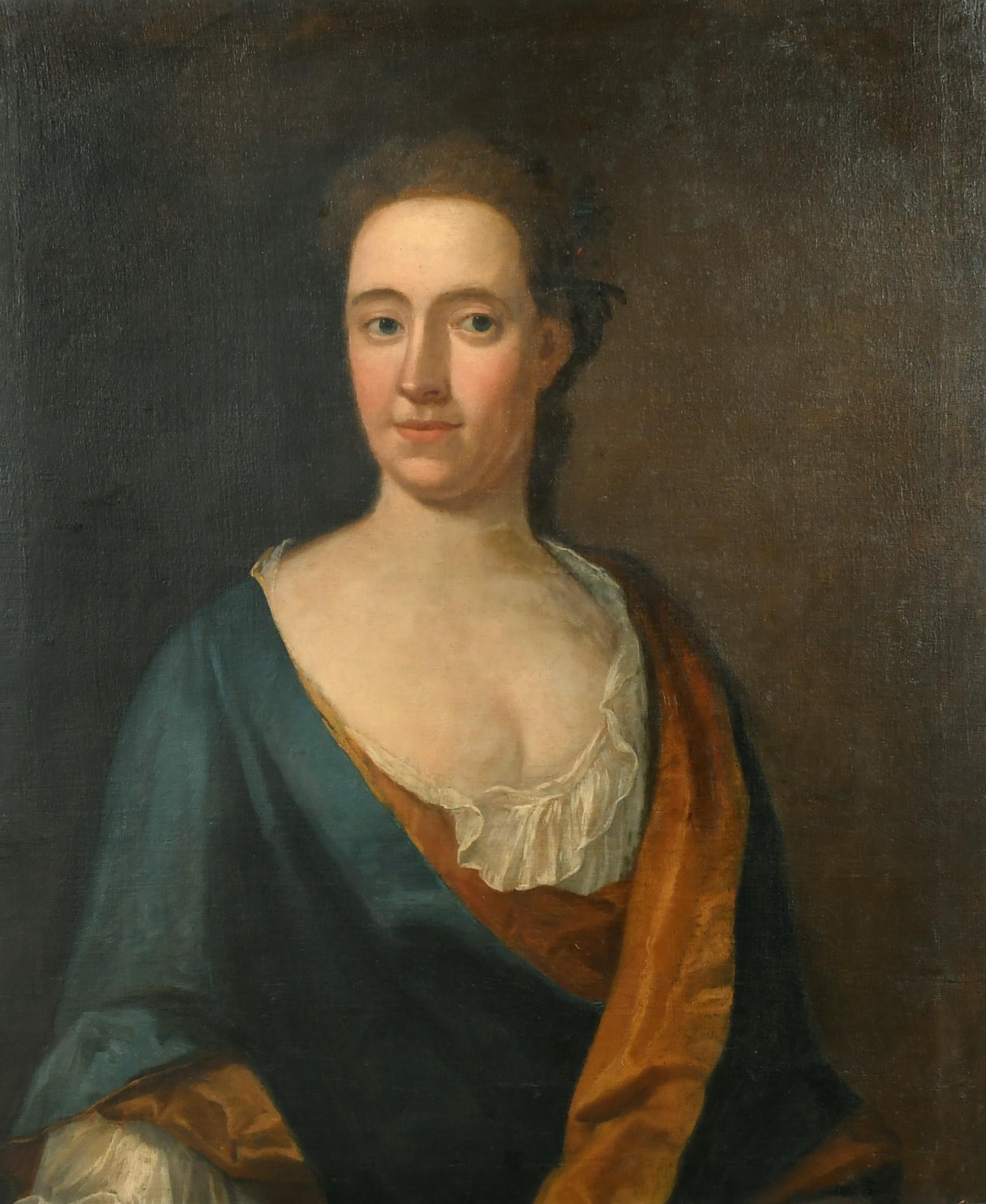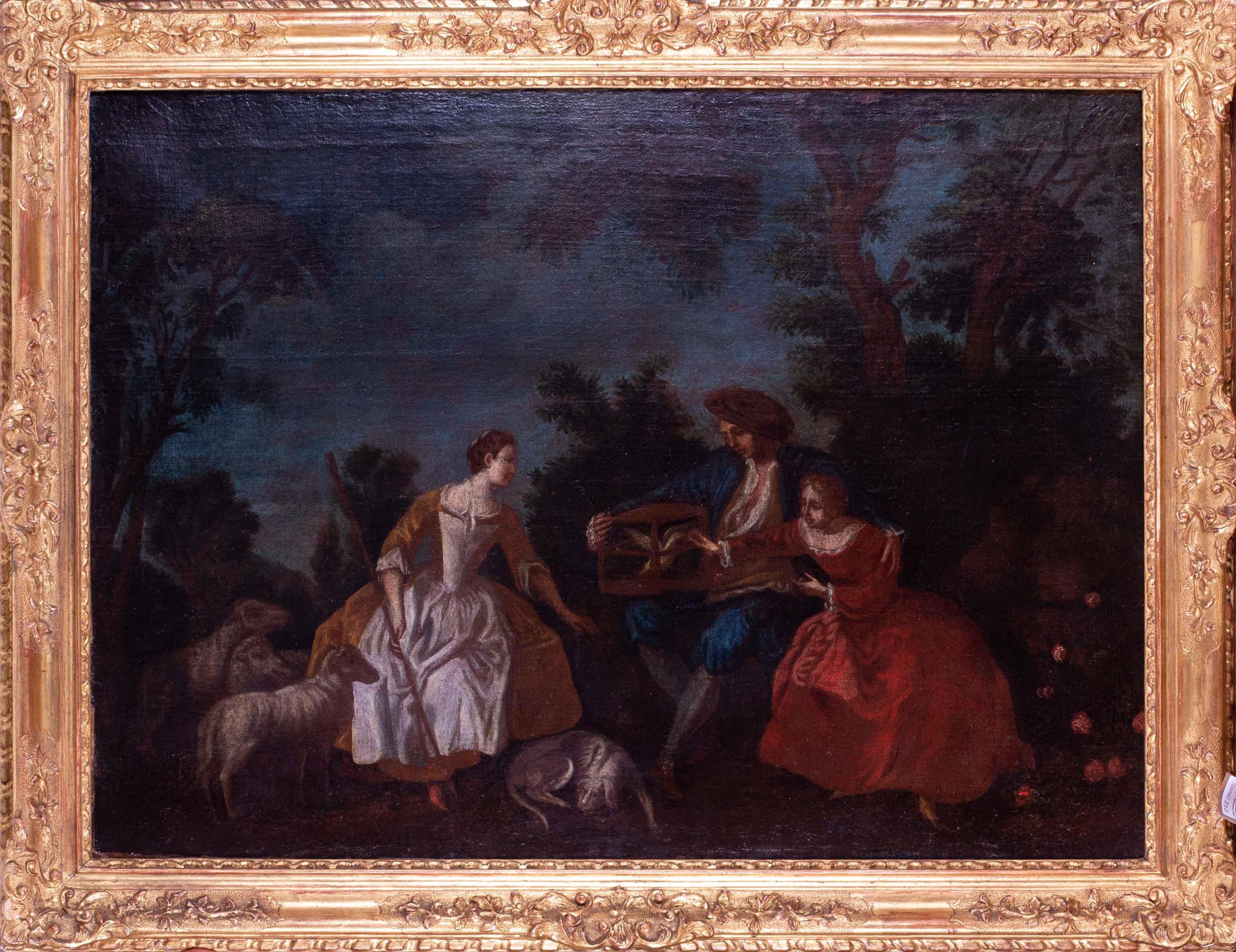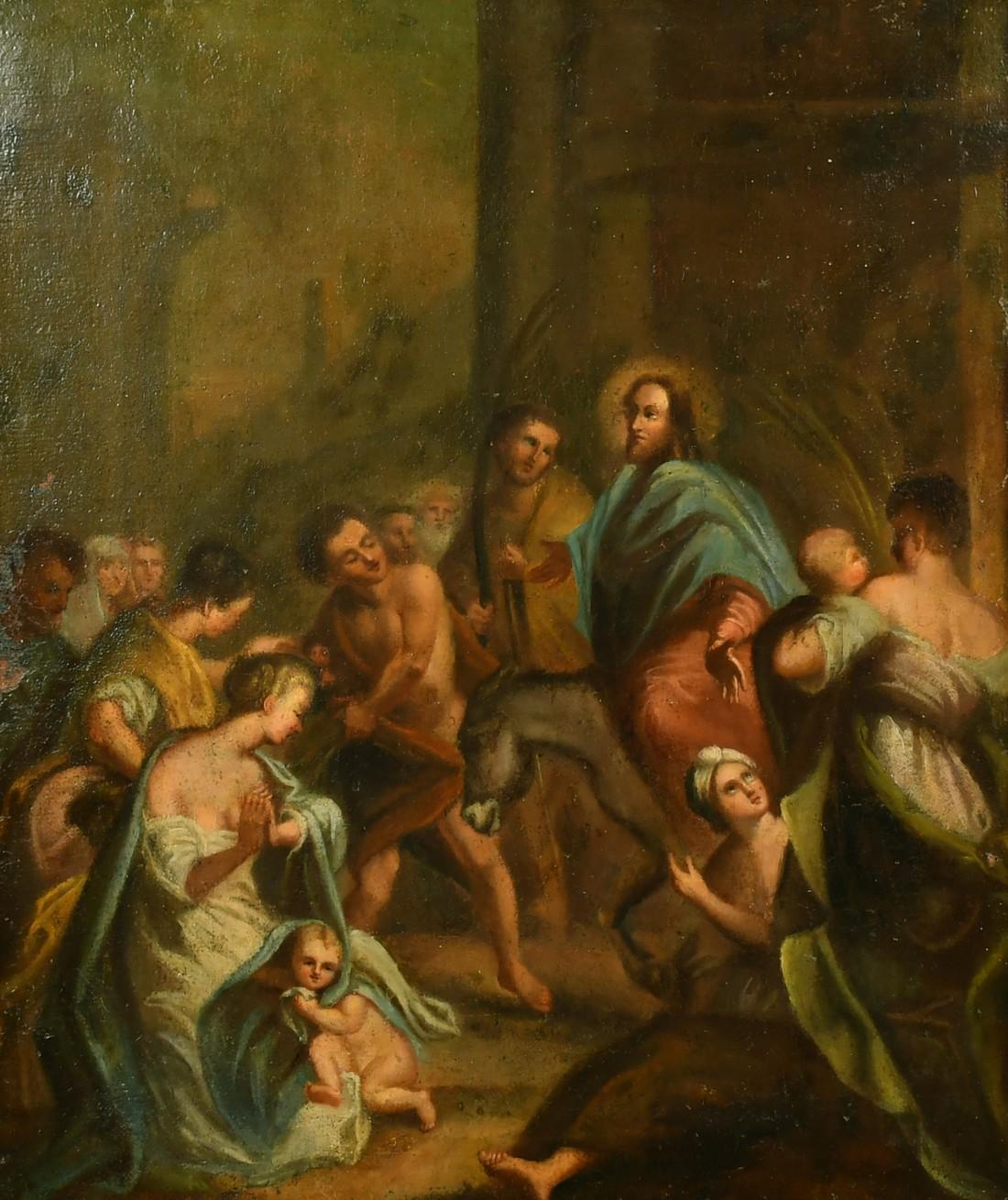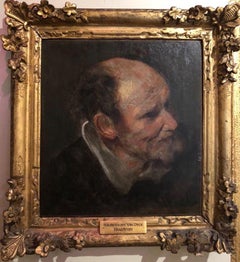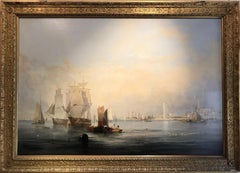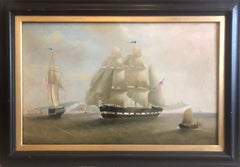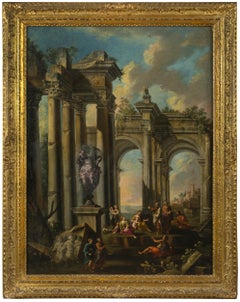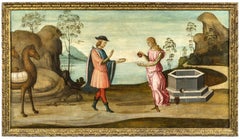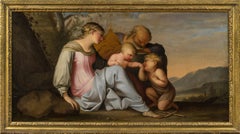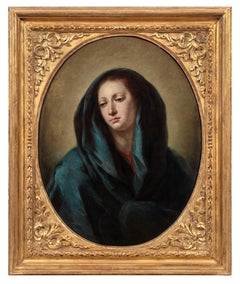Trompe l'Oeil with an engraved of Aeneas caring his Father from Troy
View Similar Items
Want more images or videos?
Request additional images or videos from the seller
1 of 9
Strickland LowryTrompe l'Oeil with an engraved of Aeneas caring his Father from Troyc.1770
c.1770
About the Item
- Creator:Strickland Lowry (1737 - 1785, English)
- Creation Year:c.1770
- Dimensions:Height: 33 in (83.82 cm)Width: 27 in (68.58 cm)
- Medium:
- Movement & Style:
- Period:
- Condition:
- Gallery Location:London, GB
- Reference Number:1stDibs: LU67332446701
About the Seller
5.0
Vetted Professional Seller
Every seller passes strict standards for authenticity and reliability
Established in 1990
1stDibs seller since 2017
42 sales on 1stDibs
Typical response time: 18 hours
Authenticity Guarantee
In the unlikely event there’s an issue with an item’s authenticity, contact us within 1 year for a full refund. DetailsMoney-Back Guarantee
If your item is not as described, is damaged in transit, or does not arrive, contact us within 7 days for a full refund. Details24-Hour Cancellation
You have a 24-hour grace period in which to reconsider your purchase, with no questions asked.Vetted Professional Sellers
Our world-class sellers must adhere to strict standards for service and quality, maintaining the integrity of our listings.Price-Match Guarantee
If you find that a seller listed the same item for a lower price elsewhere, we’ll match it.Trusted Global Delivery
Our best-in-class carrier network provides specialized shipping options worldwide, including custom delivery.More From This Seller
View All18th Century Neoclassical Oil Painting of the Trojan War: Briseis & Achilles
By James Thornhill
Located in London, GB
James Thornhill (1674-1735)
Oil on canvas
12 x 14 inches;
16 ½ x 18 ½ in. Inc. frame
The subject matter and inclusion of herms on both sides shows the influence of Louis...
Category
Early 18th Century Old Masters Figurative Paintings
Materials
Canvas, Oil
Sir Anthony Van Dyck 17th Century Oil Painting Study of a Head of a Man
By Anthony van Dyck
Located in London, GB
Sir Anthony Van Dyck (1599-1641, Flemish)
Study of a Head of Man
Circa 1627-32, Van Dyck’s second Antwerp period
Oil on paper, laid down on canvas
Dimensions 15 x 14 inches (38.1 x 3...
Category
17th Century Old Masters Portrait Paintings
Materials
Oil
Grand 19th Century English Marine Painting in Stunning Light
By John Wilson Ewbank
Located in London, GB
John Wilson Ewbank (1799 - 1847)
Shipping in the Harbour, South Shields
Oil on canvas
39.5 x 58 inches unframed
47.75 x 66.5 inches framed
Provenance:
Christie's October 2002; Lot 11.
Fine Art Society;
Private Collection
This marvellous up to scale Ewbank is full of light and warmth and almost certainly his greatest work of the sort rarely - if ever - seen on the market.
John W. Ewbank (4 May 1799–28 November 1847), was an English-born landscape and marine painter largely operational from Scotland.
The Humber river is a large tidal estuary on the east coast of Northern England.
Life
Ewbank was born at Darlington on 4 May 1799, the son of Michael Ewbank, an innkeeper. He was adopted as a child by a wealthy uncle who lived at Wycliffe, on the banks of the River Tees, in the North Riding of Yorkshire. Intended for the Roman Catholic priesthood, he was sent to Ushaw College, from which he absconded.
In 1813 Ewbank was apprenticed to Thomas Coulson, an ornamental painter in Newcastle. In around 1816 he moved with Coulson to Edinburgh, where he had some lessons with Alexander Nasmyth. He found work both as a painter and a teacher. He was nominated in 1830 one of the foundation members of the Royal Scottish Academy.
In 1833 he is listed as living at 7 Union Street on the eastern fringe of the New Town in Edinburgh.
Works
His sketches from nature were especially admired, and a series of 51 drawings of Edinburgh by him were engraved by W. H. Lizars for James Browne's Picturesque Views of Edinburgh (1825). He also made a reputation with cabinet pictures of banks of rivers, coast scenes, and marine subjects.
As an illustrator he illustrated some early editions of Scott's Waverley Novels and one edition of Gilbert White...
Category
19th Century Old Masters Figurative Paintings
Materials
Oil
$197,884
Free Shipping
A Beautiful and Large Marine - A Ship in Two Positions Off Dover
By William John Huggins
Located in London, GB
William John Huggins (1781-1845)
A Ship in Two Positions Off Dover
oil on canvas
Unsigned
33 x 45 inches, inc. frame
William John Huggins, of wh...
Category
19th Century Old Masters Figurative Paintings
Materials
Oil
17th Century Classical Oil Painting - Diana With Her Attendants in a Grotto
By Abraham van Cuylenborch
Located in London, GB
Abraham van CUYLENBROCH (1620-1658)
Diana With Her Attendants in a Grotto
1651
signed
oil on panel
12.2 in x 15.7 inches, inc. frame;
31 x 40 cm
Provenance:
Sale of Sotheby's Lo...
Category
17th Century Old Masters Figurative Paintings
Materials
Oil
Double Portrait Oil Painting Brothers George, 2nd Duke Buckingham & Lord Francis
By (After) Anthony Van Dyck
Located in London, GB
Aftrer Anthony VAN DYCK - maybe Studio (1599, Antwerp – 1641, London) Flemish
Double Portrait of George Villiers, 2nd Duke of Buckingham (1628-1687) & Lord Francis Villiers (1629-1648)
Oil on Canvas
170 x 147 cm
Anthony Van Dyck (1599-1641)
No painter has done more to define an era than Anthony van Dyck. He spent only seven and a half years of his short life (1599- 1641) in England. He grew up in Antwerp, where his precocious talent was recognised by Peter Paul Rubens, the greatest painter of his age. He worked in Rubens’s studio and imitated his style as a religious artist, painting biblical scenes redolent of the lush piety of the counter-reformation. But soon he was on the move. In 1620, he visited London for a few months, long enough to paint a history picture, The Continence of Scipio, for the royal favourite, George Villiers, Marquess of Buckingham, and a portrait of his other English patron, the great art collector, Thomas Howard, 2nd Earl of Arundel.
After a stint in Italy, making imposing portraits of the wealthy aristocracy and sketching and copying works by Titian, he returned to the Spanish Netherlands in 1627, becoming court artist to Archduchess Isabella before departing for The Hague in 1631 to paint the Dutch ruler Frederick Henry, Prince of Orange. Charles I’s invitation in 1632 led Van Dyck back to London where he was knighted, paid an annual salary of £200 and installed in a house in Blackfriars with a special jetty at which the royal barge might tie up when the King was visiting his studio. By this time Van Dyck was recognised as the leading court painter in Europe, with Velazquez at the court of Philip IV of Spain his only rival. He also excelled as a superbly observant painter of children and dogs.
Van Dyck’s notoriety in depicting children led to the introduction of groups of children without their parents as a new genre into English painting (amongst other new genres).
For the next 300 years, Van Dyck was the major influence on English portraiture. Nearly all the great 18th Century portraitists, from Pompeo Batoni and Allan Ramsay to Thomas Gainsborough and Joshua Reynolds, copied Van Dyck’s costumes, poses and compositions.
George Duke of Buckingham & his brother Francis Villiers
Painted in 1635, this double portrait was originally commissioned by Charles I, who raised the two brothers after their father, George Villiers, was assassinated in 1628. Together with their sister, Lady Mary Villiers, they enjoyed the King’s favour absolutely. Francis whose absolute ‘inimitable handsomeness’ was noted by Marvell (who was killed in a skirmish near Kingston upon Thames). The young duke who commanded a regiment of horse at the Battle of Worcester, remained closely associated with Charles II, held a number of high offices after the Restoration and was one of the most cynical and brilliant members of the King’s entourage, immortalised as ‘Zimri’ in Dryden’s Absalom and Achitopbel. As a young man he had sold his father’s great collection of pictures in the Spanish Netherlands, many of them to the Archduke Leopold Willhelm.
Painted for Charles I and placed near the portrait of their sister in the Gallery at St James’ Palace. The handling of both costumes is very rich, and the heads are very carefully and sensitively worked. That of the younger boy in particular is more solidly built up than the lower part of the figure. A preparatory drawing for the younger boy is in the British Museum.
There are copies at, e.g., Highclere Castle...
Category
17th Century Old Masters Portrait Paintings
Materials
Oil
You May Also Like
An Architectural Capriccio with the Preaching of an Apostle
By Giovanni Paolo Panini
Located in New York, NY
Provenance: Santambrogio Antichità, Milan; sold, 2007 to:
Filippo Pernisa, Milan; by whom sold, 2010, to:
Private Collection, Melide, Switzerland
De Primi Fine Art, Lugano, Switzerland; from whom acquired, 2011 by:
Private Collection, Connecticut (2011-present)
Literature: Ferdinando Arisi, “Ancora sui dipinti giovanili del Panini,” Strenna Piacentina (Piacenza, 2009): pp. 48, 57, 65, fig. 31, as by Panini
Ferdinando Arisi, “Panini o Ghisolfi o Carlieri? A proposito dei dipinti giovanili,” Strenna Piacentina, (Piacenza, 2010), pp. 100, 105, 116, fig. 101, as an early work by Panini, a variant of Panini’s painting in the Museo Cristiano, Esztergom, Hungary.
This architectural capriccio is one of the earliest paintings by Giovanni Paolo Panini, the preeminent painter of vedute and capricci in 18th-century Rome. The attribution to Panini has been endorsed by Ferdinando Arisi, and a recent cleaning of the painting revealed the artist’s signature in the lower right. Like many of his fellow painters working in Rome during his day, Panini was not a native of the Eternal City. He first trained as a painter and stage designer in his hometown of Piacenza and moved to Rome at the age of 20 in November 1711 to study figure painting. Panini joined the workshop of Benedetto Luti (1666-1724) and from 1712 was living on the Piazza Farnese. Panini, like many before and after him, was spellbound by Rome and its classical past. He remained in the city for the rest of his career, specializing in depicting Rome’s most important monuments, as well as creating picturesque scenes like this one that evoked the city’s ancient splendor.
The 18th century art historian Lione Pascoli, who likely knew Panini personally, records in his 1730 biography of the artist that when Panini came to Rome, he was already “an excellent master and a distinguished painter of perspective, landscape, and architecture.” Panini’s earliest works from this period still show the evidence of his artistic formation in Piacenza, especially the influence of the view painter Giovanni Ghisolfi (1623-1683). However, they were also clearly shaped by his contact in Rome with the architectural capricci of Alberto Carlieri...
Category
18th Century Old Masters Figurative Paintings
Materials
Canvas, Oil
Rebecca at the Well
Located in New York, NY
Provenance:
Dr. James Henry Lancashire, Manchester-by-the-Sea, Massachusetts, by 1925; probably by descent to:
Private Collection, Cumberland Foreside, Maine, until 2018
This unpublished panel is a characteristic work of the Master of the Apollo and Daphne Legend, an anonymous Florentine painter in the circle of Bartolommeo di Giovanni, Domenico Ghirlandaio, and Sandro Botticelli. The artistic personality of the Master of the Apollo and Daphne Legend was independently recognized by Everett Fahy and Federico Zeri at roughly the same moment in time. Fahy originally dubbed this artist the Master of the Ryerson Panels but later adopted Zeri’s name for the artist, which derives from his eponymous works from the Samuel H. Kress collection (Figs. 1-2). Fahy posited that the artist was most likely a pupil of Ghirlandaio active from roughly 1480 to 1510, and that he may be identifiable with one of Ghirlandaio’s documented pupils to whom no works have been securely attributed, such as Niccolò Cieco, Jacopo dell’Indaco, or Baldino Baldinetti. The present painting was first attributed to this master by Everett Fahy in 1989, who became aware of its existence only after publishing his definitive studies on the artist.
The surviving body of work by the Master of the Apollo and Daphne Legend is largely composed of series of panels treating the same theme. In addition to the works illustrating the legend of Apollo and Daphne, there are also series on the themes of Susanna and the Elders and the story of Saint Joseph, among others. The subject of the present panel is drawn from Genesis 24, the story of Isaac. It is possible that our painting relates to another work by the artist depicting the Sacrifice of Isaac formerly in the collection of E. A. McGuire in Dublin, Ireland (Fig. 3), and that these two panels were originally part of a decorative scheme based on the story of Isaac.
Although the Master’s paintings of this type have traditionally been considered painted fronts of wedding chests, known as cassoni, the scale of these paintings and the fact that they are often part of a series indicates that they are more likely spalliera panels—paintings set into furniture or the wainscoting of a room. The biblical episode depicted in this painting centers on the theme of marriage, which suggests that this work was likely commissioned for the domestic interior of a newly married couple. The Master has transcribed into paint even the minute details of this Old Testament story, in which Abraham sends a servant to travel by camel to the land of his father and seek out a wife for his son Isaac. The servant is here shown at the well...
Category
15th Century and Earlier Old Masters Figurative Paintings
Materials
Oil, Tempera, Wood Panel
Holy Family with the Infant St. John the Baptist
Located in New York, NY
Lubin Baugin
(Pithiviers 1610 – 1663 Paris)
Holy Family with the Infant Saint John the Baptist
Oil on canvas
22 x 42 ¼ inches (55.9 x 107.3 cm)
Provenance:
Marcello and Carlo ...
Category
17th Century Old Masters Figurative Paintings
Materials
Canvas, Oil
Head of the Virgin
Located in New York, NY
Provenance: Private Collection, Paraguay.
This unpublished Head of the Virgin is a new addition to the rich corpus of paintings by Giovanni Battista Tiepolo. While the artist freque...
Category
18th Century Old Masters Figurative Paintings
Materials
Oil, Canvas
Men Fraternizing with Ladies, Pre-20th Cen Oil Painting by Wilfrid Beauquesne
By Wilfrid Constant Beauquesne
Located in Long Island City, NY
Artist: Wilfrid Constant Beauquesne, French (1840 - 1913)
Title: Men Fraternizing with the Ladies
Year: c. 1890
Medium: Oil on Canvas, signed l.l.
Size: 21.5 x 26 in. (54.61 x 66.04 ...
Category
1890s Old Masters Figurative Paintings
Materials
Canvas, Oil
Julius Caesar on Horseback
By Antonio Tempesta
Located in New York, NY
Provenance: Private Collection, South America
Antonio Tempesta began his career in Florence, working on the decoration of the Palazzo Vecchio under the direction of Giorgio Vasari. He was a pupil first of Santi di Tito...
Category
16th Century Old Masters Paintings
Materials
Canvas, Oil
$100,000

